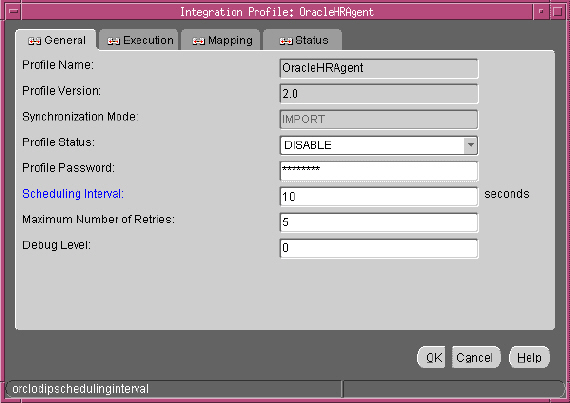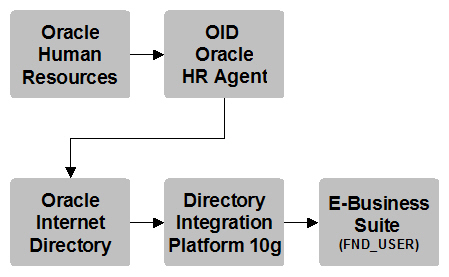In-Depth: Synchronizing Oracle HRMS with OID
We often talk about managing E-Business Suite users with Oracle Internet Directory 10g. But what about situations where you need to manage Oracle Human Resources employees in Oracle Internet Directory? Or create E-Business Suite accounts automatically for new employees? That's where the Oracle HR Agent comes into the picture.
For starters, let's distinguish between users and employees:
USER: An E-Business Suite user is someone who needs to be able to log into Apps. That user might need to file expense reports, view her payslip, or file purchase requisitions. All E-Business Suite users have userids and records in the FND_USER repository, and have associated responsibilities that govern what the functions and data that they can access.
EMPLOYEE: An employee is someone whose information is managed by the Human Resources module in the E-Business Suite. Oracle Human Resources tracks information like employee numbers, manager hierarchies, and other personally identifiable information like birthdates.
Employees aren't Necessarily Users
Not all employees are users, and vice versa. For example, a major retailer might use the E-Business Suite's Human Resources modules to manage employee information for their cashiers, but those cashiers may not be authorized to log into the E-Business Suite at all.
When Worlds Overlap
From an organizational standpoint, this distinction makes a lot of sense. The HR department manages employees, and the IT department manages E-Business Suite accounts.
But what happens when those worlds overlap? Following the example above, what about a scenario where the cashiers are permitted to view their payslips via the Self-Service Human Resources module?
In this scenario, the same person would be represented in two places:
- In the Human Resources module
- In the Apps FND_USER repository
Creating Employee Entries in Oracle Internet Directory
It's possible to use the Oracle Internet Directory Human Resources connector to push employee information from Oracle HR to Oracle Internet Directory.

You can export a subset of employee data from Oracle Human Resources into Oracle Internet Directory. The connector includes both a prepackaged integration profile and an Oracle Human Resources agent that handles communication with Oracle Internet Directory.
You can schedule the Oracle Human Resources connector to run at any time, configuring it to extract incremental changes from the Oracle Human Resources system. You can also set and modify mapping between column names in Oracle Human Resources and attributes in Oracle Internet Directory.
Exportable HR Attributes
There's a long list of HR employee attributes that you can send to Oracle Internet Directory, including:
- First name, last name
- Title
- Sex
- Date of birth
- Employee number
- Email address
- Others...
You can synchronize user information between Oracle Internet Directory and the E-Business Suite's FND_USER like this (see article on sso with 11i for details) :

Therefore, it's possible for employee information to make a round-trip like this:

Not In the Opposite Direction
This architecture would support a business flow where a new employee is registered in E-Business Suite Human Resources by the HR department. That employee's information is then propagated via Oracle Internet Directory to FND_USER, where an IT administrator grants the appropriate Apps responsibilities to the user.
The opposite direction is not supported. It is not possible to have an employee created in Oracle HR based upon a new user entry in Oracle Internet Directory.
No comments:
Post a Comment